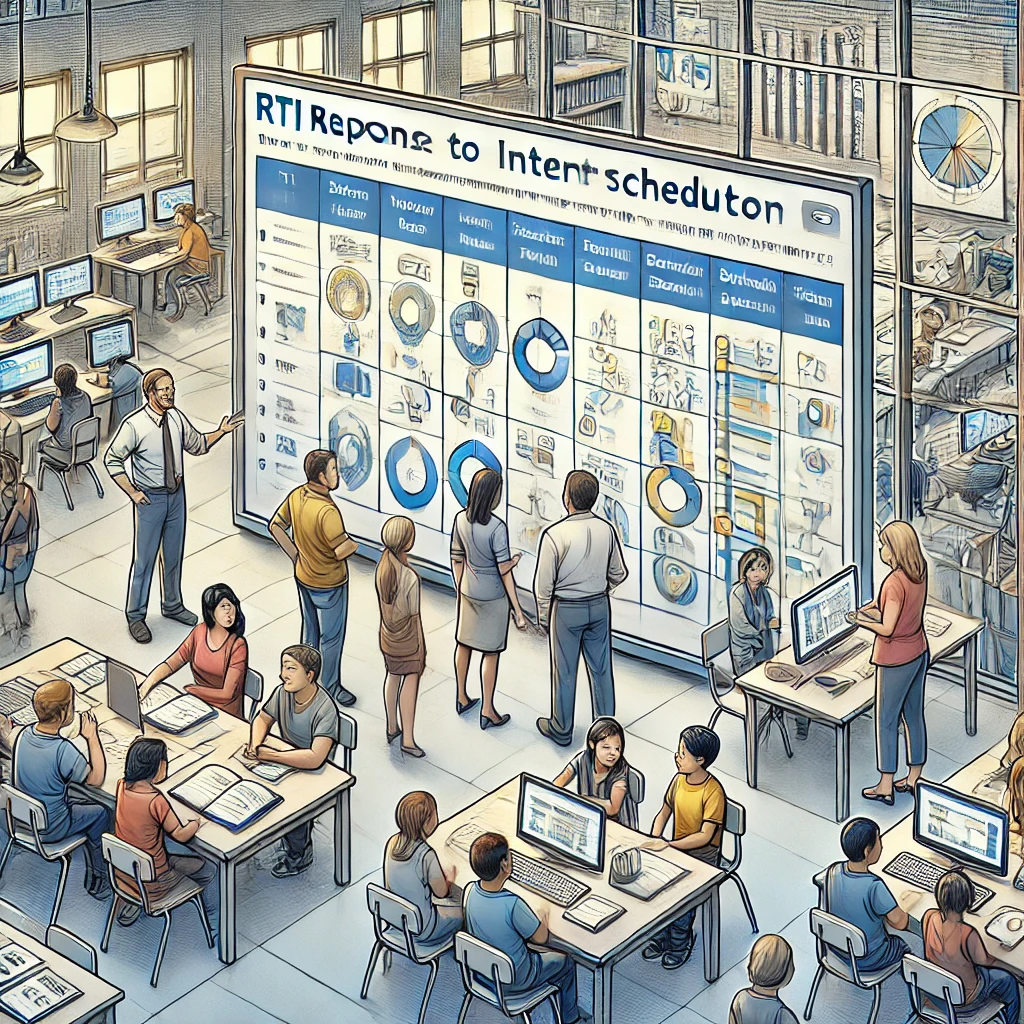Maximizing Intervention Efficiency with RTI Scheduler: A Comprehensive Guide
In education, the ability to identify and address students’ needs efficiently is crucial for fostering academic success. Response to Intervention (RTI) frameworks have become a core component in many schools to meet students’ diverse needs. However, managing interventions, tracking progress, and organizing instructional time can be overwhelming without the right tools. This is where the RTI Scheduler comes into play. By leveraging technology to streamline scheduling, progress monitoring, and resource allocation, the RTI Scheduler maximizes intervention efficiency and helps educators better support student outcomes.
This comprehensive guide will explore how RTI Scheduler works, the key features that make it indispensable, and how it can be implemented in schools to create a more effective RTI system.
Understanding RTI (Response to Intervention)
Before diving into the specifics of the RTI Scheduler, it’s essential to understand the RTI framework. RTI is a multi-tiered approach that provides early and systematic interventions to students who struggle academically or behaviorally. The goal is to identify these students early and provide support tailored to their specific needs.
RTI typically involves three tiers:
- Tier 1: Universal interventions for all students. This is the general instruction that happens in the classroom. All students are screened to determine if they need additional support.
- Tier 2: Targeted interventions for students who did not make adequate progress with Tier 1 support. These students receive small group instruction focused on their specific needs.
- Tier 3: Intensive interventions for students who continue to struggle despite Tier 2 support. This tier often involves individualized instruction.
The challenge for educators lies in managing the interventions effectively across these tiers, ensuring that students receive the right support at the right time. This is where the RTI Scheduler proves invaluable.
What Is an RTI Scheduler?
An RTI Scheduler is a software tool designed to streamline and automate the process of scheduling, implementing, and monitoring interventions in the RTI framework. By managing the logistical aspects of RTI, it frees up educators’ time to focus on instruction and direct student support. The scheduler coordinates intervention times, groups, and resources, making it easier to meet the needs of all students efficiently.
Key Features of RTI Scheduler
The RTI Scheduler typically includes a range of features that make it an essential tool for schools using the RTI framework. Here are some of the most important functionalities:
- Automated Scheduling: The RTI Scheduler simplifies the process of setting up intervention schedules. It considers teacher availability, room resources, and student needs, automatically generating optimized schedules for interventions across multiple tiers. This prevents scheduling conflicts and ensures that interventions happen regularly and consistently.
- Group Formation and Management: Grouping students according to their intervention needs is critical for success in RTI. The RTI Scheduler helps create small groups based on students’ academic data, ensuring that students with similar needs are grouped together. This feature allows educators to tailor instruction and manage groups without overloading teachers with administrative tasks.
- Progress Monitoring Integration: RTI relies heavily on data to assess student progress. Many RTI Schedulers integrate progress monitoring tools, allowing educators to track students’ performance across time. This data can be used to make decisions about whether a student should move up or down the RTI tiers, ensuring that interventions are effective.
- Data-Driven Decision Making: The RTI Scheduler provides visual dashboards and reports, enabling educators and administrators to analyze data at a glance. These insights can be used to adjust instruction, reassign resources, and identify trends in student performance across classrooms or grade levels.
- Communication Tools: Coordinating RTI interventions often requires communication among multiple stakeholders, including teachers, interventionists, parents, and administrators. The RTI Scheduler includes communication tools that allow educators to share schedules, progress reports, and updates on student performance with ease. This helps foster collaboration and ensures that everyone is on the same page regarding a student’s progress.
- Flexible Customization: Schools have different needs and approaches to implementing RTI. An RTI Scheduler typically allows for flexibility in customizing the intervention schedule, duration, and resources according to the specific needs of the school or district. This customization ensures that the tool can be adapted to support a wide range of instructional models and frameworks.
- Intervention Library: Many RTI Schedulers come with a built-in intervention library that allows educators to choose from research-based interventions. This feature ensures that students receive evidence-based instruction tailored to their areas of need.
- Resource Management: Efficiently allocating resources—whether personnel, rooms, or materials—is key to effective RTI implementation. The RTI Scheduler tracks resource availability and helps schools distribute their interventions more efficiently, ensuring that no student or teacher is left unsupported.
Benefits of Using an RTI Scheduler
Implementing an RTI Scheduler in a school’s intervention program offers numerous benefits for students, teachers, and administrators alike. Let’s explore how this tool enhances efficiency and educational outcomes.
- Time Savings for Educators: By automating the scheduling and progress tracking processes, the RTI Scheduler allows educators to spend more time on instruction and less time on paperwork. Teachers no longer have to manually coordinate intervention groups or spend hours tracking student progress in spreadsheets. This reduction in administrative burden improves teacher satisfaction and effectiveness.
- Consistency in Interventions: One of the biggest challenges in RTI is ensuring that interventions are delivered consistently and regularly. The RTI Scheduler automatically ensures that interventions are scheduled and carried out as planned, reducing gaps in support and ensuring students receive the help they need without delays.
- Improved Data Accuracy: Accurate data is crucial for making informed decisions about student progress in RTI. An RTI Scheduler integrates progress monitoring and tracks student data automatically, reducing the chance of errors in recording and analyzing performance. This leads to more reliable decision-making and better outcomes for students.
- Enhanced Collaboration: RTI is a collaborative process that involves teachers, specialists, and parents. The RTI Scheduler facilitates communication between all stakeholders, making it easier to share data and updates on student progress. This improves transparency and ensures that everyone involved in the student’s education is aligned.
- Increased Flexibility: The flexibility of the RTI Scheduler allows schools to modify intervention schedules and structures based on students’ evolving needs. Whether a student requires more time in Tier 2 or an adjustment in group size, the Scheduler enables quick and easy modifications to the program.
- Better Student Outcomes: Ultimately, the goal of RTI is to improve student achievement by providing timely and appropriate interventions. The RTI Scheduler ensures that students receive the right level of support without administrative delays, which leads to better outcomes in academic performance and overall growth.
Implementing RTI Scheduler in Your School
Implementing an RTI Scheduler successfully requires careful planning and training to ensure that staff can fully utilize the tool. Here’s a step-by-step guide to rolling out the RTI Scheduler in your school:
- Evaluate Your Current RTI Program: Before adopting the RTI Scheduler, evaluate your current RTI implementation. Identify pain points in scheduling, data tracking, and group formation. Understanding your school’s specific needs will help you make the most of the RTI Scheduler’s features.
- Choose the Right RTI Scheduler: There are multiple RTI Schedulers available, each with its own features and benefits. Look for a tool that offers the flexibility, integration, and reporting capabilities that match your school’s needs. Consider factors such as ease of use, cost, and customer support when selecting a solution.
- Train Your Staff: Providing professional development for your staff is essential for successful implementation. Teachers, interventionists, and administrators need to understand how to use the RTI Scheduler to manage schedules, input data, and monitor student progress. Ongoing training ensures that staff remain proficient in using the tool.
- Integrate with Existing Systems: If your school already uses other data management or learning systems, make sure the RTI Scheduler integrates smoothly with those platforms. This will minimize disruptions and streamline the flow of data between systems.
- Monitor and Adjust: Once the RTI Scheduler is implemented, monitor its effectiveness and gather feedback from staff. Make adjustments as needed to ensure that it continues to meet the evolving needs of students and teachers. Ongoing review and refinement will ensure that your school’s RTI program remains efficient and effective.
Conclusion
The RTI Scheduler is a game-changer for schools implementing the Response to Intervention framework. By automating the complex processes of scheduling, monitoring, and managing resources, it helps educators maximize intervention efficiency. With more time to focus on instruction and a data-driven approach to decision-making, schools can ensure that all students receive the support they need to succeed academically. Whether your school is just beginning with RTI or looking to improve an existing program, adopting an RTI Scheduler is a crucial step towards optimizing your intervention efforts and improving student outcomes.
Also Read: Gaston Rojas on Innovation and Growth in a Global Economy




Post Comment